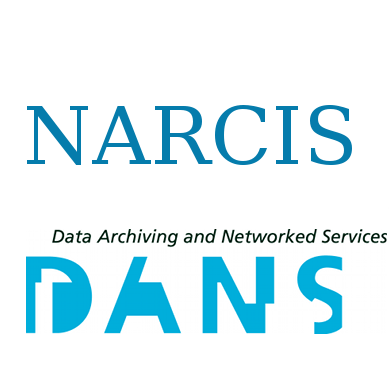Focal point
Location
National Academic Research and Collaborations Information System (NARCIS) is the main Dutch national portal for those looking for information about researchers and their work. NARCIS aggregates data from around 30 institutional repositories. Besides researchers, NARCIS is also used by students, journalists and people working in educational and government institutions as well as the business sector.
NARCIS provides access to scientific information, including (open access) publications from the repositories of all the Dutch universities, KNAW, NWO and a number of research institutes, datasets from some data archives as well as descriptions of research projects, researchers and research institutes.
This means that NARCIS cannot be used as an entry point to access complete overviews of publications of researchers (yet). However, there are more institutions that make all their scientific publications accessible via NARCIS. By doing so, it will become possible to create much more complete publication lists of researchers.
In 2004, the development of NARCIS started as a cooperation project of KNAW Research Information, NWO, VSNU and METIS, as part of the development of services within the DARE programme of SURFfoundation. This project resulted in the NARCIS portal, in which the DAREnet service was incorporated in January 2007. NARCIS has been part of DANS since 2011.
DANS - Data Archiving and Networked Services - is the Netherlands Institute for permanent access to digital research resources. DANS encourages researchers to make their digital research data and related outputs Findable, Accessible, Interoperable and Reusable.
Members:
Resources
Displaying 581 - 585 of 1863Stadslandbouw voorbeelden : Inspiratie door variatie
Een aantal steden in Nederland pioniert met het verbinden van stad en platteland, met het idee dat het verbinden van stad en platteland kan bijdragen aan een gezonde en leefbare stad. Iedere stad heeft hier haar eigen redenen voor, variërend van het bevorderen van een aantrekkelijke woonomgeving, duurzaamheid, sociale cohesie of gezondheid. De landbouw speelt een belangrijke rol in het verbinden van stad en ommeland. Een term die daarom veel gehoord wordt in de discussie over de groene loper en de relatie stad - ommeland is stadslandbouw
Evenredige participatie Natura 2000-beheerplannen
Om te kunnen beoordelen in hoeverre bij beheerplannen van Natura 2000 gebieden sprake is van evenredige participatie, moeten de partijen in beeld worden gebracht. Dat zijn zowel de voortouwnemers, bevoegd gezag, werkgroepleden (en voorzitter), belangenorganisaties. Het betreft daarbij: rijksoverheid (Staatsbosbeheer, waterstaat, defensie), provincie, gemeente, waterschap; natuurbeschermingsorganisaties (Natuurmonumenten, Landschappen, Vogelbescherming); bedrijfsleven (landbouw, recreatie) en burgers (jagers, sportvissers)
Landbouwontwikkelingsgebied De Ass, gemeente Cuijk. Toetsingsadvies over het milieueffectrapport en de aanvulling daarop.
De gemeente Cuijk stelt een nieuw bestemmingsplan op voor het landbouwontwikkelingsgebied (LOG) De Ass. Het bestemmingsplan wordt opgesteld voor de verplaatsing van twee ondernemers van de directe omgeving van de kern van Haps naar het LOG De Ass, de woningbouw op de te verlaten bedrijfslocaties en natuurcompensatie. Voor dit bestemmingsplan wordt een m.e.r.-procedure doorlopen
Modelling the consequences of increasing bioenergy demand on land and feed use
The aim of this paper is to show the consequences of a model extension towards the presentation of by-product in the production of biofuels. By-products can be used as a substitute for feed grain use in livestock production. A boost in biofuel production will also show a strong increase in the availability of by-products. To identify the impact of modelling biofuel production with and without presentation of by-products two different model versions have been applied.


